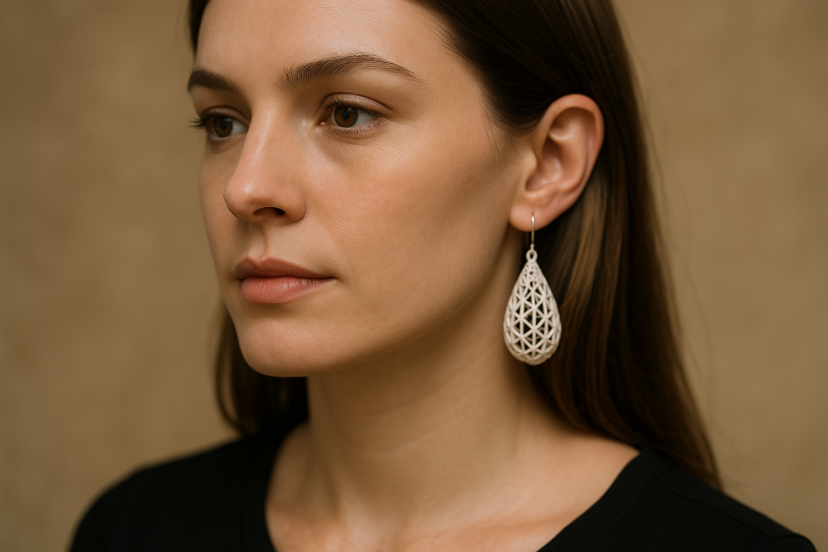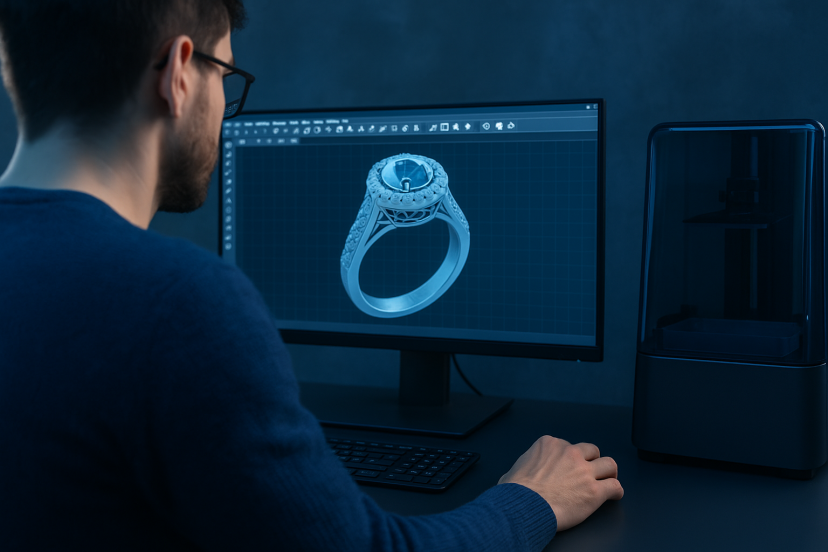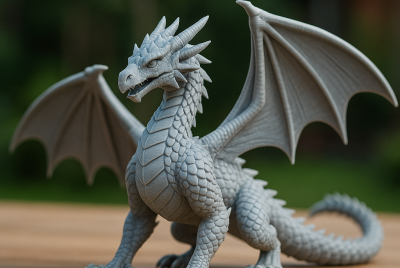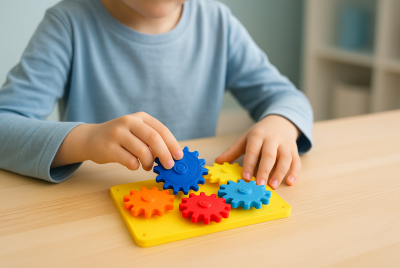Top 3D Printed Jewelry Designs
Jewelry has always been a form of self-expression. However, with the rise of 3D printed jewelry, creativity has entered an entirely new dimension. Designers now use digital modeling and precision printing to craft pieces that combine artistic vision with technological mastery. From sculptural rings to fluid, nature-inspired pendants, 3D printing allows for limitless customization, eco-friendly production, and intricate details once impossible by hand. The result is a captivating blend of innovation and craftsmanship—modern jewelry that reflects both individuality and the future of design.
The Rise of 3D Printed Jewelry in Modern Fashion
3D printing was mainly used for prototypes in the past. It is now a major factor in fashion and accessories, enabling designers to create intricate, personalized jewelry more quickly and responsibly.
A 2024 study in the journal Metals explored how Laser Powder Bed Fusion (LPBF) technology enables the creation of fine metal jewelry with remarkable precision. Researchers found that while post-processing treatments provided printed metals a premium gloss similar to conventional gold or platinum casting, adjusting laser parameters allowed for near-perfect surfaces and increased durability.
Meanwhile, the 2023 article in the International Design Journal examined how 3D printing has reshaped jewelry design aesthetics. It revealed that parametric modeling and computer-aided design open new artistic frontiers, merging technology with creative expression. The authors concluded that 3D printed jewelry “represents a fusion of digital craftsmanship and personal storytelling,” enabling forms once impossible to produce by hand.
These studies highlight the dual strengths of 3D printing—technical precision and artistic freedom.

Benefits of 3D Printed Jewelry
1. Limitless Customization
Every design starts as a digital file, which means you can easily modify its shape, texture, and size before printing. No more being limited by molds—every ring or pendant can be truly unique.
2. Sustainable and Eco-Conscious
3D printing minimizes waste because materials are deposited layer by layer, using only what’s needed. Research in Sustainability reports that additive manufacturing can reduce energy use and material waste by up to 50%, aligning with eco-fashion goals.
3. Lightweight and Comfortable
Modern materials such as titanium, polyamide, and resin are strong yet light, ensuring jewelry that feels elegant and effortless to wear all day.
4. Innovative Textures and Shapes
Through parametric modeling, artists can generate intricate patterns that mimic coral reefs, feathers, or flowing fabric—designs impossible through casting or carving.
5. Affordable Luxury
Without molds or large-scale production, costs are lower. Independent designers can now create custom pieces that look high-end but remain accessible.
Top 3D Printed Jewelry Designs Worth Exploring
1. Geometric Elegance: Parametric Rings
Defined by symmetry and precision, geometric rings are among the most popular 3D printed styles. The International Design Journal study noted that these rings showcase “mathematical harmony and structural beauty,” making them perfect for minimalists seeking modern sophistication.
2. Organic Flow Necklaces
Flowing lines and nature-inspired curves dominate this style. Made from flexible resin or bio-based filament, these necklaces rest softly on the collarbone and feel feather-light.
3. Personalized Name Bracelets
3D modeling allows your name or initials to be transformed into sleek bracelets, blending sentimental value with cutting-edge craftsmanship.
4. Futuristic Metallic Earrings
Metal-sintered earrings printed via LPBF feature intricate latticework that’s strong yet delicate. They’re modern, bold, and gleam like luxury metalwork straight out of a high-end atelier.
5. Art Deco-Inspired Pendants
Combining vintage geometry with advanced techniques, these pendants give timeless motifs a futuristic spin—perfect for those who love history with a tech twist.

Recommended 3D Printing Tools
- ANYCUBIC Photon Mono 4 Resin 3D Printer – Excellent for small, detailed prints like earrings or charms.
- Siraya Tech Fast 3D Printing Resin – Produces ultra-smooth finishes ideal for polished jewelry.
- Elegoo Mercury X Wash and Cure Station – Simplifies post-curing and delivers a glossy final surface.
- Creality Sonic Pad – Improves printing precision and consistency for fine details.
- Jewelry Polishing Kit – Adds professional sheen to resin or metal prints.
These tools streamline every stage of jewelry creation—from modeling to finishing—making professional results achievable even for hobbyists.
The Technology Behind 3D Printed Jewelry
Modern jewelry printing relies heavily on precision engineering. The Metals study found that LPBF’s microscopic control of heat and layering enables the production of jewelry-grade alloys with exceptional surface finish and strength. Fine-tuning scan speed, layer thickness, and energy density ensures smoother textures and fewer defects.
Complementing this, the International Design Journal emphasized the artistic potential of parametric design, a technique where algorithms generate fluid or geometric patterns. These digital methods empower designers to create pieces that reflect individuality—bridging technology and emotion.
Beyond aesthetics, a Scientific Reports review found that additive manufacturing cuts lifecycle emissions by up to 40%, mainly because production occurs on demand, eliminating excess inventory and transportation waste.
Together, the science and artistry behind 3D printing point to a future where jewelry is not just worn but designed to tell a story.
Real-World Adoption and Brand Innovations
Luxury houses like Boucheron, Chanel, and Dior have adopted 3D printing for rapid prototyping and limited-edition collections. Forbes reports that these brands use resin and metal fusion to test concepts faster and reduce design costs.
Independent creators are thriving too. According to TCT Magazine, small jewelry studios that switched to 3D printing cut costs by 60% while improving design turnaround.
If you’re serious about creating high-quality pieces, investing in an enclosed 3D printer can help maintain consistent temperature, minimize dust, and improve precision—especially crucial for delicate filigree or lattice designs.
Material Choices for 3D Printed Jewelry
Resin
Ideal for prototypes and fine details, resin produces smooth, glass-like textures. Colored or translucent resins can even mimic gemstones or enamel.
Metal Powder (Titanium, Gold, Bronze, Steel)
Using LPBF or Direct Metal Laser Sintering (DMLS), metal powders fuse into solid, durable jewelry. The Metals study confirmed that these alloys maintain high ductility and brilliance after polishing.
Nylon and Polyamide
Affordable and flexible, these materials are perfect for large statement necklaces or avant-garde shapes.
Bio-Based Filaments
Made from renewable resources like corn starch or sugarcane, bio-filaments reduce carbon emissions while offering modern texture options—ideal for sustainable brands.
Expert Tips for Designing 3D Printed Jewelry
- Start with detailed CAD modeling using Fusion 360 or Rhino for precision.
- Test small prototypes before scaling your design.
- Use hybrid finishing methods—combine polishing, electroplating, and painting for professional aesthetics.
- Prioritize ergonomics—comfort matters as much as looks.
- Join design communities like Thingiverse or Shapeways to collaborate and learn from other creators.
Sustainability and Ethical Impact
Traditional mining and casting often produce harmful waste and emissions. 3D printing, however, supports ethical jewelry creation through on-demand production and recyclable materials.
The International Design Journal study emphasized how digital fabrication empowers local artisans to produce high-end designs without industrial equipment, fostering creative independence and reducing global supply chain strain.
By combining eco-design principles with innovation, 3D printed jewelry promotes a circular economy where beauty, sustainability, and individuality coexist.
The Future of 3D Printed Jewelry
Emerging technologies like AI-assisted modeling, biocompatible metals, and smart materials will push jewelry even further. Scientists are experimenting with coatings that resist tarnish, color-shifting alloys, and even temperature-responsive wearables.
A recent Applied Surface Science report predicted that nanocoatings paired with 3D printing could produce jewelry that stays reflective for decades. Meanwhile, bio-printing research hints at accessories that may one day integrate sensors or emit light—turning jewelry into interactive fashion tech.
The future of jewelry isn’t just decorative—it’s dynamic, sustainable, and deeply personal.
Conclusion
3D printed jewelry is transforming how we design, produce, and experience adornment. Backed by studies like the Metals review on LPBF precision and the International Design Journal’s analysis of digital artistry, it’s clear that additive manufacturing isn’t just a trend—it’s a creative revolution. With limitless customization, sustainable materials, and scientific innovation, 3D printing empowers anyone to create wearable art that’s both meaningful and modern.
FAQs
1. Is 3D printed jewelry durable?
Yes. Metal-based pieces printed with LPBF or DMLS have strength comparable to cast jewelry and resist tarnish after finishing.
2. Can I print jewelry at home?
Absolutely. Affordable resin and filament printers let you create custom designs right from your workspace.
3. What materials are safest for skin contact?
Polished titanium, stainless steel, and fully cured resins are biocompatible and safe to wear.
4. Does 3D printing help lower its impact on the environment?
Yes. It minimizes waste, shortens supply chains, and supports ethical production.
5. How can beginners start designing?
Begin with simple rings or pendants using free modeling software, then experiment with prototypes to refine your craft.




